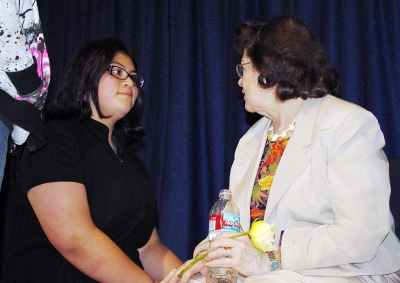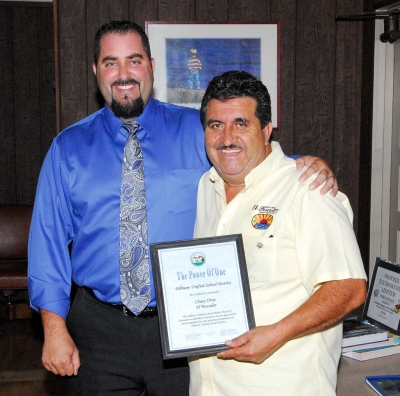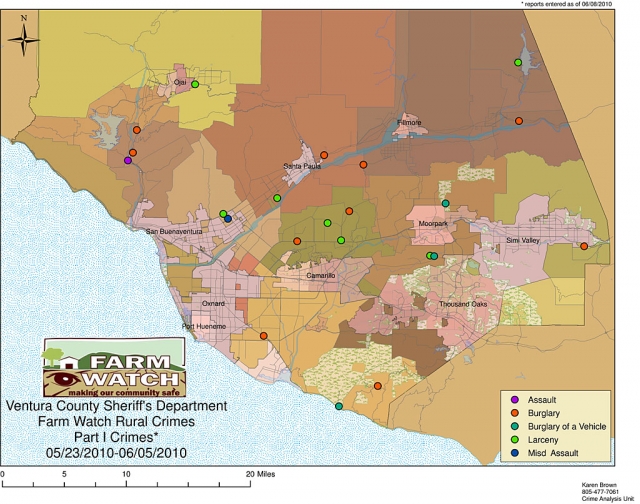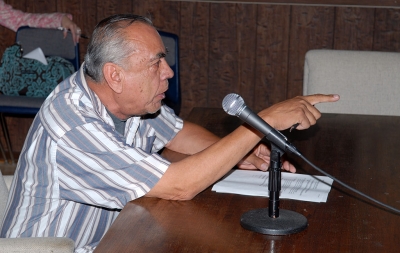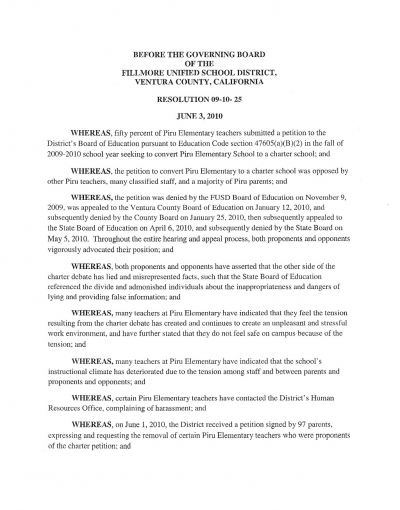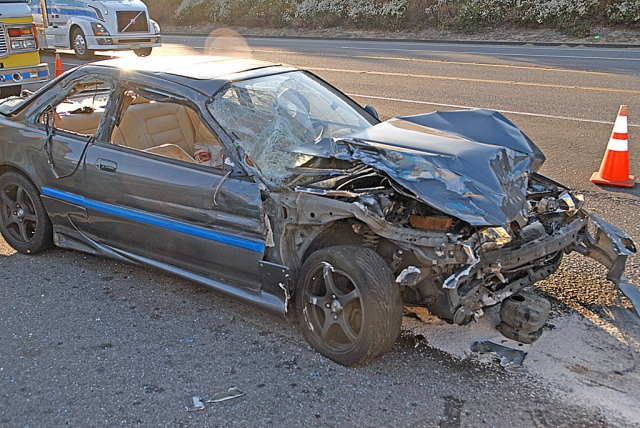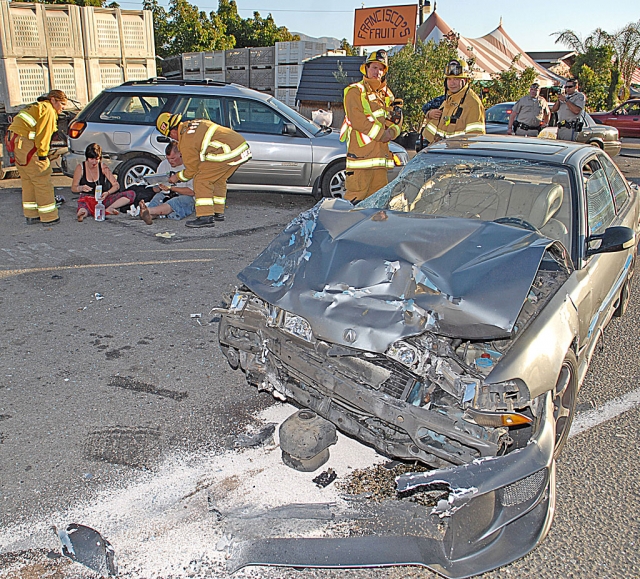|
By Jennifer Beal — Wednesday, June 16th, 2010
Eighth grade students at Fillmore Middle School had a rare opportunity Tuesday May 25th. They heard the testimony of a Holocaust survivor, Clara Knopfler. As Clara related her story of life in Transylvania she emphasized she was the same age as FMS students when her country was occupied by Hungarians, Hitler‘s first allies in World War II. As she spoke the silence in the FMS gym was palpable. Eighth graders have been reading the Diary of Anne Frank in Language Arts and studying the Holocaust in their history classes. They sat mesmerized by actually hearing the history from a woman who lived it. As Clara explained, she was first made to live in the ghetto, an old brick factory with no restrooms. She was then transported to Auschwitz and later ended up in Riga concentration camp where she made gun powder for the German army. Luckily she lived through these trials with her mother at her side, Pepi Deutsch, who’s spirit led she and her daughter through the darkest times. From Riga she went to the Eastern front to dig anti-tank trenches. There she confronted a German soldier beating her mother. By the simple, but strong statement, “don’ t you have a mother?” actually got him to stop hitting her mother. Lastly Clara and her mother were forced to CONTINUED » |
 Concerned citizens asked the Board for clarifications on spending at the June 15 School Board meeting. Enlarge Photo By Kimberly Rivers — Wednesday, June 16th, 2010
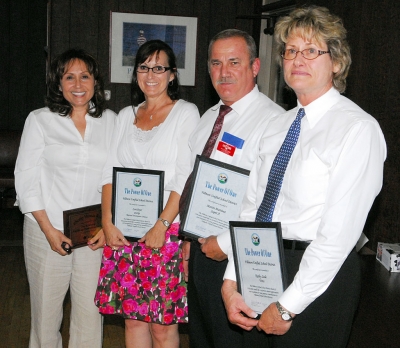 Receiving recognition for participating in the “E-Scrip” program was (r-l) Kathy Lisle of Vons and Martin Hernandez of Super A, along with the E-Scrip coordinator Lori Dyer, and school board member Virginia De la Piedra. Enlarge Photo On Tuesday, June 15th the Fillmore Unified School Board of Trustees met for a regular meeting. The school year ended last week, Board President Tony Prado was not present, but school business carries on with concerned citizens asking the Board for clarifications on spending while the Board scrambles to cover it’s next payroll payment as the County claims money recently put in District accounts. The Board heard again from Mrs. Mary Ford of Fillmore regarding concern over the situation in Piru and referred to the recent actions of Sweeney in hiring a mediator to help, but “how can the mediator do her job if these teachers are going to be moved” asked Ford. Board materials confirm that the District paid Ms. Cynthia Kings company Communication Catalysts $10,000.00 for “mediation services” over the next year. During an interview King commented that following a year end meeting with staff last week she feels the process is “Off to a good start, [emphasizing start] and I have met some wonderful people that I look forward to working with”. King was not part of the decision making process to pass the Resolution allowing the involuntary transfer of teachers from Piru School but she does intend to meet individually with all School Board members as part of the process. King will be meeting with community members in Piru and then performing “in-service” work during the upcoming school year. In recognizing the great contribution of CONTINUED » |
|
By Anonymous — Wednesday, June 16th, 2010
As the Fourth of July holiday approaches, Fillmore residents are preparing to celebrate with BBQs and family get-togethers. Unfortunately, these celebrations can quickly turn disastrous, especially when children and teenagers are injured while discharging fireworks. Common sense and wise judgment are paramount to a safe holiday celebration. The City of Fillmore Fire Department wants to ensure that Fillmore citizens enjoy a safe Fourth of July holiday. Residents are reminded that California State Fire Marshal approved “safe and sane” fireworks sold in Fillmore are legal between June 28 12:00pm – July 5 12:00pm The use of any type of non-approved firework is illegal and will result in criminal charges and fines in excess of $1,000. If you witness any illegal activity in the Fillmore area please report it. Please call 805-524-1500 ext. 350 with any information you can provide. An illegal fireworks enforcement team dedicated to responding to fireworks related calls for service will be on hand to insure violations are resolved both quickly and safely. Below are several safety tips to insure you and your family enjoy a safe Independence Day celebration. |
|
By Anonymous — Wednesday, June 16th, 2010
 Wednesday, June 16, The Fillmore Historical Museum, moved a caboose from Bud Lowe’s property in Hopper Canyon. T and T Crane Company removed the caboose from the flatbed and lowered it to a piece of track next to the depot. Enlarge Photo |
|
By Tim Hagel — Thursday, June 10th, 2010
A detailed "Farm Watch E Newsletter" will be sent out in a week or so. We wanted to get these important details out to you fast. BURGLARY WARNING If you have rural farming, ranching or nursery property in the Las Posas Valley, Tierra Rejada Valley , Oxnard Plains, Santa Rosa or Santa Clara River Valley. In the last 7 days the Sheriff's Department has responded with our deputies and CSI Unit to a sudden increase in rural burglaries at nurseries and farms. We believe that at least two of them are connected and are located 7 miles apart. Here are the Highlights: What does all this mean? Who are they? What do we know about them? What can you do? ALSO: Be safe Farm Watch! |
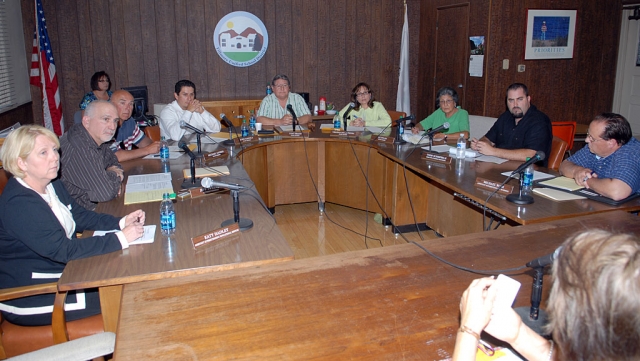 Everyone but Mike Bush listened intensely to a story of harassment from a Piru Teacher. Enlarge Photo By Kimberly Rivers — Wednesday, June 9th, 2010
Piru teachers receive five transfer slips at a special meeting held on June 3rd
In a special meeting held on Thursday, June 3rd, the Fillmore School Board of Trustees unanimously approved Resolution 09-10-25. By passing this Resolution, the Board has granted themselves the ability to circumvent part (Article 10) of their collective bargaining agreement with the Fillmore Unified Teacher Association (FUTA), and thus giving themselves “sole discretion” in making transfers and reassignments “to and from” Piru Elementary School for the 2010-2011 school year. In letters dated June 4, 2010 five teachers at Piru Elementary School were notified of their reassignments. Four of these teachers were petitioners in the effort over the past year to convert the school to a charter school; these four teachers are Mrs. Susan Jolley, Ms. Shara Elliott, Ms. Jill Kelley and Mr. Chris Pavik. A Piru second grade teacher, Mr. John Schaper who was opposed to the charter petition has also received a transfer notice. Schaper did not respond to requests for comment. The letter to teachers signed by Superintendent Jeff Sweeney states that this action is “non-disciplinary”, and does not signify that the District is charging any teachers with “specific acts of misconduct”. Sweeney states in the letter that this is “one of a number of changes that will be made to begin the healing process of the Piru school community…” At press time Sweeney was unable to respond to comment requests due to not having enough time with end of year business. School Board members did not respond to requests for comment made via contact information provided on the District website. The text of the Resolution contains 14 paragraphs describing why the Board feels action must be taken. Nine of the paragraphs clearly make reference to the fact that certain teachers were part of the charter petition over the last year. The Resolution states “fifty percent of Piru Elementary teachers submitted a petition to the District…seeking to convert Piru Elementary school to a charter school”…”the petition to convert Piru Elementary to a charter school was opposed by other Piru teachers, many classified staff and a majority of Piru parents”…” throughout the entire hearing and appeal process, both proponents and opponents vigorously advocated their position”…”on June 1, 2010 the District received a petition signed by 97 parents, expressing and requesting the removal of certain Piru Elementary teachers who were proponents of the charter petition.” The entire text of the Resolution is available to the public at the School District office. The bargaining agreement between CONTINUED » |
|
By Anonymous — Wednesday, June 9th, 2010
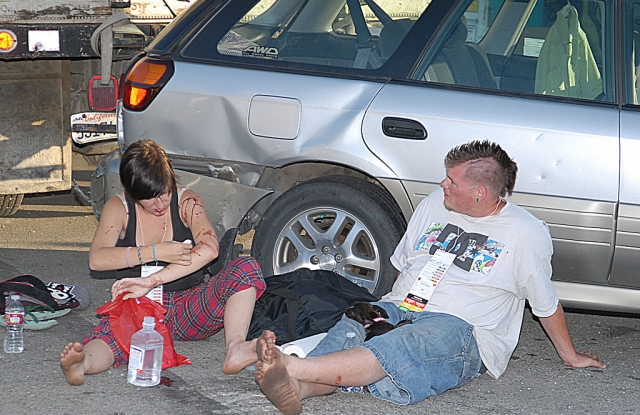 A three car accident occurred Saturday at 6:24 p.m., 1700 block of Old Telegraph Road, near Francisco’s fruit stand on Highway 126. Police reported five victims, nobody trapped. Three people were injured but did not require hospitalization. A small dog survived the crash. An Acura Coupe was totaled in the incident. Pictured are two of the victims leaning against a Subaru Outback which was also involved in the accident. Traffic was slightly impaired in eastbound lane no. 1. Enlarge Photo |
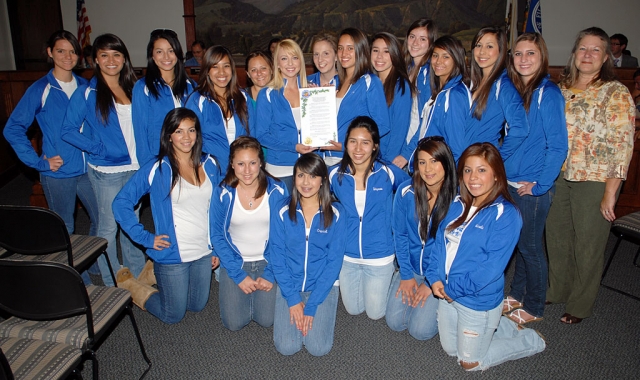 Mayor Patti Walker presented the FIllmore High School Cheerleading Squad with a proclamation for the winning track record at numerous competitions. In March the cheerleaders won First Place in the California State Championships. Enlarge Photo By Naomi Klimaszewska — Wednesday, June 9th, 2010
Announcements Presentations Public Comments Fillmore Chamber of Commerce President David Crockett announced an open house at the Fillmore Family Medical Group to be held 5-7 pm on the first floor at 828 Ventura Street. Crockett also gave a CONTINUED » |
|
By Anonymous — Wednesday, June 9th, 2010
Noah Stoessl, 8, of Fillmore, was airlifted by a VC Fire Department helicopter out of a remote section of Los Padres National Forest, Saturday, north of Fillmore. As of Sunday Stoessl was in good condition at the Ventura County Medical Center. He had been hiking with his mother and a group of people on a trail above the U.S. Forest Service’s Oak Flat Ranger Station, when he fell about 10 feet, hitting his head on a rock. He has been reported in good condition. |

